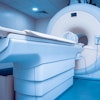Sunday, November 26 | 11:25 a.m.-11:35 a.m. | SSA19-05 | Room N230B
In a presentation on Sunday, U.K. researchers plan to report encouraging results on the use of MRI texture analysis to detect extracapsular nodal spread related to oral cavity squamous cell carcinoma.Patients with this condition frequently have a poor prognosis. The hope is that MR texture analysis can provide additional early information to influence treatment and improve outcomes.
The researchers evaluated 30 patients with node-positive oral cavity squamous cell carcinoma who underwent surgical treatment for the condition. Half of the subjects had pathologic evidence of extracapsular nodal spread.
Two experienced radiologists reviewed the regions of interest (ROI), which included the largest nodal cross-sectional area, based on T2 and postcontrast T1-weighted MR images. Key texture parameters such as entropy, skewness, and kurtosis were extracted from the ROIs using proprietary software with 2-, 4-, and 6-mm filters.
Among the findings, nodal entropy values from T2-weighted MRI had a statistically significant correlation in predicting extracapsular nodal spread in oral cavity squamous cell carcinoma.
Dr. Russell Frood, a radiology registrar in the nuclear medicine department at St. James's University Hospital in Leeds, is scheduled to present the results.


.fFmgij6Hin.png?auto=compress%2Cformat&fit=crop&h=100&q=70&w=100)





.fFmgij6Hin.png?auto=compress%2Cformat&fit=crop&h=167&q=70&w=250)











